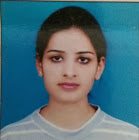Duration
This tutorial will span over five parts outlined as follows:
Tutorial Outline
- Part-1: Types of Biomedical Text and Their Source (20 Slides, 30 Minutes)
- Scientific Medical Literature
- Electronic Health Record
- Patient Related Textual Data
- Online Discussion Forums (Twitter, Blogs etc.)
- Part-2: Types of Knowledge in the Biomedical Text (30 Slides, 20 Minutes)
- Domain-specific entities, relations, events
- Cause-Effect relations
- Sentence classification into Introduction, Methods, Results and Discussion (IMRAD) types
- Numerical information
- High polarity sentences
- Comparisons with related work
- Part-3: Text mining Approaches w.r.t. Biomedical Text (30 Slides, 30 Minutes)
- Rule-based approaches (Sophisticated Regular Expressions)
- Machine Learning Approaches (Supervised, Semi-supervised, Unsupervised)
- Part-4: Knowledge Extraction Systems from Literature (50 Slides, 70 Minutes)
- Joint Extraction of Entities and Relations from Drug Labels using an Ensemble of Neural Networks
- An Unsupervised Approach for Cause-Effect Relation Extraction from Biomedical Text
- Part-5: Hands on Session (10 Slides, 20 Minutes)
- Using ready-to-use NLP tools and library over biomedical text.
- To Identify Biological Entities
- To Identify Semantic Relation among Entities
- Discussion (10 Minutes)
Technical Equipment Required:
- Laptop with Python having Stanford-Core-NLP Package
- Internet Connection


